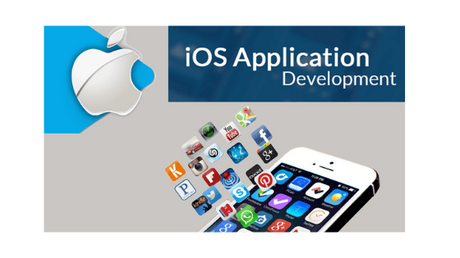
While developing an IOS app, its necessary that your app works with great proficiency and should not appear unresponsive, however, having limitations of IOS devices, it might prove hard to work in the right manner. Not only due to the poor performance of the app, there is a degradation in the company's reputation but also hurt the reviews associated with it. The developer should always strive for IOS 8 Apps Development. Following are some of the pro tips to pursue while developing an application: -
* Views should be opaque: -
Opaque property of views should always be set to yes because this property allows the system to draw your views excellently. Views are easily available in the format of Interface Builder or code. Relatively on a static screen, setting opaque property won't create a major difference. But when the view is ingrained in a scroll view or is a feature of complex animation, turning on or off of opaque property can embark a lot of difference. Debug/color blended options can be used in a simulator to determine what views are not set to opaque.
* Stop locking the main thread: -
A developer should not work on the main thread because the associated UI kit does all its work like drawing on the main thread. Risk of doing all the work on the main thread will hinder the code, and the app will start responding badly. The problems related to main thread mainly occurs at the moment of I/O operations.
* Choosing the correct resources and collection(s): -
Using the most appropriate class or object is the key feature of writing any efficiency code. Collections Programming Topics is a document present in Apple's Developer Library that explains which class suits what work and has an immense number of classes flexible with all works. The most common collection types: -
1) Arrays which give a quick lookup by index, slow lookup by value and slow insertion and deletion
2) Dictionaries which store key values and gives quick lookup by keys
3) Sets which are an unordered list of values and gives a quick lookup by value and quick in insertion and deletion
* Enabling GZIP compression: -
Many immense apps rely on external data from remote servers or other external APIs. Sometimes while developing an application, downloads data in the format of XML, HTML, JSON, etc. The problem arises the time when it comes to a network of mobile. A user may be on EDGE network and the next second on 3G network. Whatever be the condition, you can't keep the user waiting.
Compressing GZIP on both server and client is the only way to reduce the size of any file. IOS already supports GZIP compression if you use NSURL Connection or any framework designed over it.
* App and folder architecture:
It is of utmost importance to decide on the correct and most suitable architecture for the respective app before jumping to the coding part, as a suitable architecture will help in making the app more testable, easier in terms of understandability and comprehend-ability and simultaneously also reduce the maintenance cost. Talking about architecture, either the traditional and conventional MVC architecture could be followed, or more gaudy architectures like MVVM or VIPER could be adopted.
* Managing Dependency:
It is but certain that some third party libraries would be used in the app developed. There are three crucial ways in which one can easily manage the dependencies in the project.
A) Cocoa Pods: It is the most outstanding depending managers for both C-Cocoa projects and Swift. It consists of almost 10,000 libraries and thus, can help in scaling up the project(s) elegantly. It is one of the easiest and effective ways for dependency management, similar in approach to Ruby Gems.
B) GitHub Submodules: Git submodules can also be used for organizing one's dependencies as the subreports in the project. However, the problem with Git submodules is that one's project doesn't have the source for code he/she depends on. It only consists of a reference to the submodule's repository, which for most of the time does not even control that repository.
* Proper Certificating and Provisioning Profiles:
One of the most stressful yet most important steps in the testing and distributing of an iOS / Android app is the process of getting proper certificates and provisioning. Certificates are necessarily required for the signing of code, which in turn is of primordial importance as without it one cannot run the developed app on an actual device.
It is always necessary to follow the features mentioned above or tips to eradicate the lousy performance o IoS application. One should always crave to establish a flawless application which could cater to the needs of the consumer. Bad performance and late responding flaws create a bad impression in the market as well as is not suitable for the reputation of the company.
About The AuthorSunny Chawla is a Marketing Manager at AIS Technolabs which is Web design and Development Company, helping global businesses to grow by IOS 8 Apps Development. I would love to share thoughts on Social Media Marketing Services and Game Design Development etc.
